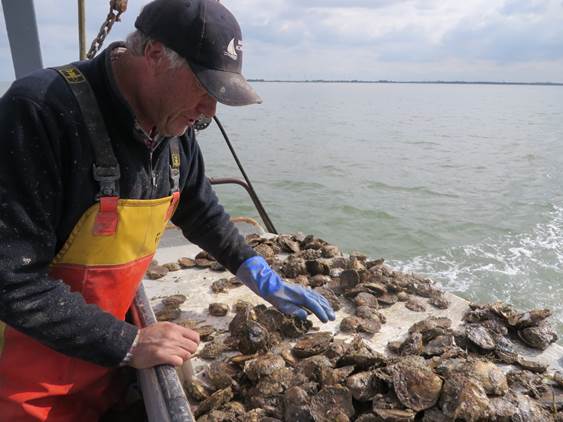Sarah Allison has worked in the marine conservation sector for 10 years. She currently works as the Living Seas Coordinator for Essex Wildlife Trust and is a research PhD student at the University of Essex. In this opening post for thinkingcountry’s series on marine wildlife and conservation, Sarah writes about her experience of working with the Essex oystermen to conserve Britain’s native oysters.
In November 2009 the marine and coastal access act was passed in the UK. This progressive new piece of legislation put, for the first time, the conservation of marine species and habitats at the very forefront of domestic law. So, in the 7 years since the legislation was passed, how has it been implemented and is it being used for the successful protection and conservation of marine species and habitats?
One of the big wins provided by the Marine Act was the establishment of Marine Conservation Zones (MCZ’s). These zones or protected areas were designed to complement the existing suite of nature conservation designations already established along our coastline. With the addition of MCZ’s, the UK government hoped to achieve an ecologically coherent network of designated sites for nature conservation. In 2012 the first 27 were designated. One of the first areas was the Blackwater, Colne, Crouch & Roach MCZ. Totalling 282km2 it was and still is the largest inshore MCZ in the UK.

The primary reason for designation was the presence of Native Oyster Ostrea edulis. This ecologically and commercially important bivalve has been lost in over 99% of its range, leaving only small isolated patches. Since designation a working group of conservationists, scientists and commercial fishing organisations have worked hard to develop surveys and design field experiments which, when conducted in partnership were used to develop a series of management practices, restoration projects and education events. One of the great successes so far was the creation of the UK’s first Native Oyster bed.

25,000 breeding adult oysters were translocated to an area covering 6.5ha, within the MCZ. This newly created habitat is now being monitored closely; looking at breeding success, settlement of juvenile oysters, colonisation of other species associated with oyster beds as well and predation and mortality. The MCZ and the collaborative approach to data gathering and scientific rigour which informs fisheries, conservation and management practices is one of the few examples in the UK of conservationists working successfully alongside industry and scientists to implement conservation and protection through the legislative framework put in place by the UK government. The Marine and Coastal Access Act continues to be one of the most useful pieces of legislation available to date to marine conservationists, and with more MCZ’s planned throughout UK territorial waters there are still huge gains to be had, but their ultimate success will not be down to just the designation of an area, but the determination, ambition and support of individuals and sectors in that area, working together, all working towards healthier marine wildlife populations, regardless of the sector from which they come.

